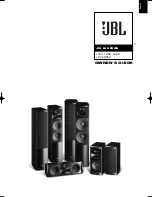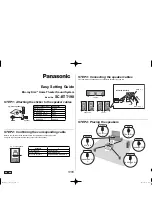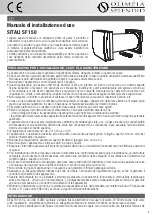
40
Hex [E] - two second pause
Hex [C] - simulates the [#] key on a touch tone telephone
Hex [F] - end of telephone number marker
Hex [D] - forces the panel to search for dial tone
The panel will attempt to call the pager one time. After dial-
ing the digits in the telephone number the panel will send the
account number and reporting code followed by the [#] key
(Hex [C]).
There is no ringback when using Pager Format. The panel
has no way of confirming if the pager was called success-
fully; a failure to communicate trouble will only be generated
once the maximum number of attempts has been reached.
NOTE:
Do not use the digit C in a reporting code when using
Pager Format. In most cases, the digit C will be interpreted as
a [#], which will terminate the page before it has finished.
NOTE:
If the panel detects a busy signal, it will attempt to
page again. It will make the maximum number of attempts
programmed in section [165].
Force dialing should be disabled when using Pager format.
NOTE:
When using Pager format, you must program two
hex digit E’s at the end of the telephone number.
Pulse Formats
Depending on the pulse format selected the panel will com-
municate using the following:
• 3/1, 3/2, 4/1 or 4/2
• 1400 or 2300 Hz handshake
• 10 or 20 bits per second
• non-extended
The digit ‘0’ will send no pulses and is used as a filler. When
programming account numbers enter four digits. When pro-
gramming a three digit account number the fourth digit must
be programmed as a plain ‘0’ which will act as a filler digit.
If an account number has a ‘0’ in it, substitute a HEX digit ‘A’
for the ‘0’. Examples:
• 3 digit account number [123]- program [1230]
• 3 digit account number [502] - program [5A20]
• 4 digit account number [4079] - program [4A79]
When programming reporting codes two digits must be
entered. If one digit reporting codes are to be used the sec-
ond digit must be programmed as a ‘0’. If a ‘0’ is to be trans-
mitted substitute a HEX digit ‘A’ for the ‘0’.
Examples:
• 1 digit reporting code [3] - program [30]
• 2 digit reporting code [30] - program [3A]
To prevent the panel from reporting an event program the
reporting code for the event as [00] or [FF].
NOTE:
This communication format cannot be selected if
Downlook is required.
Scantronics Format
This is a DTMF format that sends reporting codes as:
•One 4-digit account code
•Eight 1-digit reporting channels (event code)
•One 1-digit status channel
The software automatically generates a code for the event
based on the programming of the call direction groups.
Channels
1
2
3
4
5
6
7
8
aaaa
x
x
x
x
x
x
x
x
i
Account
Event
Status
Code
Code
Code
When you program the reporting codes for zones and events
(programming sections [320]-[353]), program them in the for-
mat XY, where:
X= channels 1-8
Y= event code (0-9)
If your central station uses a Scantronics 5100 receiver, only
program numbers from 1 to 6 for the event code.
Example: If you program the zone 3 alarm reporting code
as [31], the panel will send event code 1 in channel 3. The
panel will send the number 5 for each of the other channels,
so that the event code will look like:
5 5 1 5 5 5 5 5
The panel will send the status code (i) based on the status of
the zone:
7 = Alarms, Tampers, Restorals, Openings & Closings
8 = Trouble or Trouble Restoral
9 = Test Transmission.
Example: If there is an alarm on Zone 3 the panel will send:
a a a a
5 5 1 5 5 5 5 5
7
To disable communication for specific events, program ‘00’ or
‘FF’ for the reporting code.
Robofon Format
The control panel can use ROBOFON communication for-
mat to transmit alarm messages to a receiver. When the
panel acts as the ROBOFON dialer, it can receive the follow-
ing ASCII signals using ODD parity:
HANDSHAKE:
77 Hex, actually received as F7 Hex.
ACK:
06 Hex, actually received as 86 Hex.
NAK:
15 Hex, actually received as 15 Hex.
The data is received by the receiver as 1000Hz tones at 20
ms/bit. A “0” in the bit pattern represents tone on for 20ms,
and a “1” in the bit pattern represents tone off for 20ms. The
data bytes are transmitted least-significant-bit (LSB) first.
The data is transmitted in the following format:
S D1 D2 D3 D4 D5 D6 D7 D8 EXT CHKSUM
Where:
The panel will wait the programmed “Wait for Handshake” for
the initial handshake, it will wait 20 sec for any subsequent
handshake during the same phone call.
200 Baud FSK (CESA)
This format transmits with the LSB first in the data stream
using 1 start bit, 8 data bits, and 2 stop bits (no parity).
The information transmitted is as follows:
• Five Digit Decimal Account Code
• One Digit Event Identifier
• Two Digit Zone Number (00-99)
• Eight Zeros (filler)
After the panel dials, this format looks for a 960 ms FSK
handshake at 1850 Hz for 15 ms, 1650 Hz for 15 ms, and
1850 Hz for 15 ms again repeated 32 times. The panel will
proceed to send its carrier by emitting 1180 Hz for a period
of 800 ms to 1 second, followed by the event utilizing 980 Hz
for a Mark (1) and 1180 for a Space (0) at 200 Baud. The
panel will send the exact same transmission twice in a row
with a 600-800 ms pause. If the two transmissions match
exactly, the receiver will give acknowledgement by giving the
panel the same FSK pattern as the handshake. The panel
can then hang up, or repeat the process indefinitely until it
has no further events to transmit.
In the event that the two transmissions do not match, the
panel will re-transmit the transmission once if no kiss-off is
received after three seconds. The panel will repeat this a
total of five times before counting the round as a failed
attempt.
Data
Description
S
55 Hex as start signal
D1
30 Hex, as the first digit of the account code.
D2
30 Hex, as the second digit of the account code
D3 to D6
3X Hex, as the following four digits of the account codes,
X = 0 - 9
D7 to D8
3X Hex, as the two digits of the report codes. X= 0 - 9, A - F
EXT
03 Hex, as the end of transmission signal
CHKSUM
YY, it is the XOR of D1 through D8 and then XORed with the
EXT
















































